When the winter season approaches, we can put on layers of clothing and turn up the indoor heating as the temperatures drop. Sadly, the plants in your yard can’t do the same thing.
People assume that they will only see flowers again in spring. However, that doesn’t have to be the case because there are plants that can grow and survive despite the harsh, cold weather. It also means your garden does not have to become a bleak, empty canvas for the ensuing months. To begin filling up your landscape with color, here are some plants to choose from that can grow in winter:
1. Cornelian Cherry
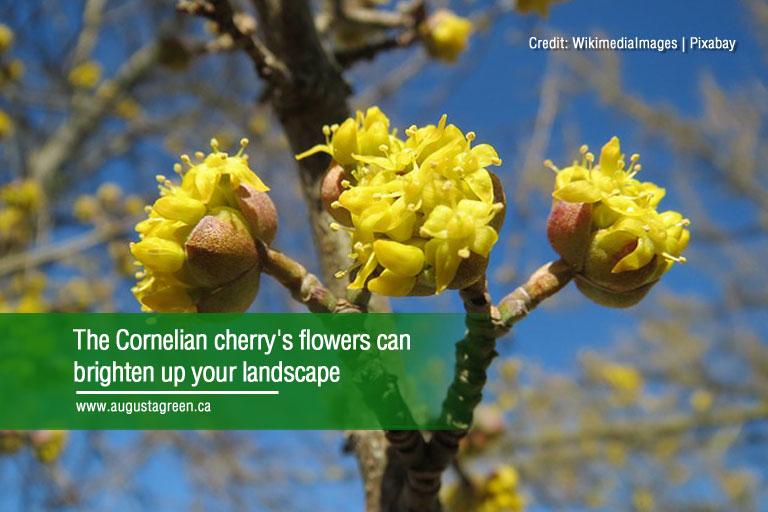
While there is beauty in seeing snowfall on your lawn, you might also want to see a splash of colour. The Cornelian cherry blooms in late winter, which means its eye-catching yellow flowers will be on full display. You can instantly improve the appearance of your yard with this type of winter plant.
Cornus mas, also known as Cornelian cherry, is a species of flowering plant that belongs in the dogwood family Cornaceae. It’s a medium to large shrub or tree that can grow to 5–12 metres tall with greenish twigs and dark-brown branches.
The leaves are 4–10 cm long and 2–4 cm broad with an oblong shape and a full margin. Its flowers are small, about 5–10 mm in diameter, each with four yellow petals. The fruit is an edible, single-seed red drupe about 2 cm long and 1.5 cm in diameter.
2. Lily of the Valley
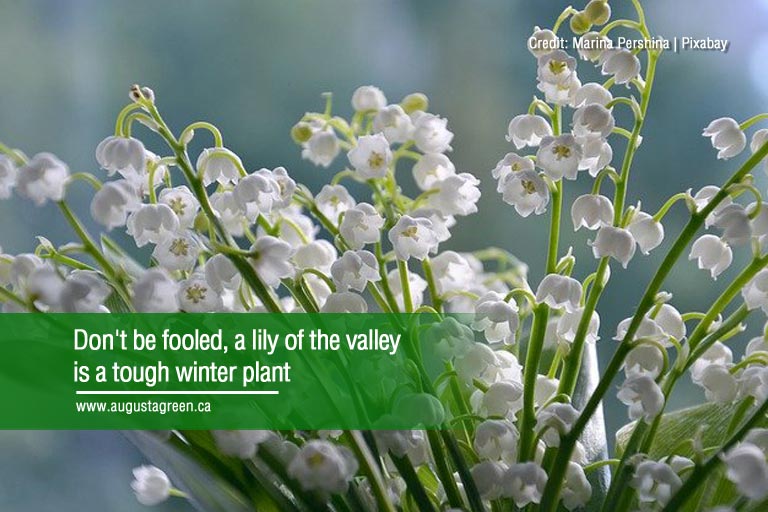
Convallaria majalis, or lily of the valley, is a woodland flowering plant with suspended white bell-shaped flowers. Its stems grow to 15–30 cm tall, and it has one or two leaves that measure about 10–25 cm across.
The flowers produce a sweet scent and have an interesting shape. Six white tepals at the base forms a bell that measures 5–10 mm in diameter. The fruit is a small orange-red berry about 5–7 mm in diameter, each of which contains a few whitish to brownish seeds.
With their delicate features, you might think that these fairylike winter garden plants can’t stand a chance against the extremes of winter. Yet they are capable of withstanding the cold and can also tolerate shade, which means they can survive with only partial sunlight.
Take note, however, that this plant contains cardiac glycosides, which is poisonous for both humans and pets. If you have pets or children, keep them away from this plant to be safe.
3. Snowdrop
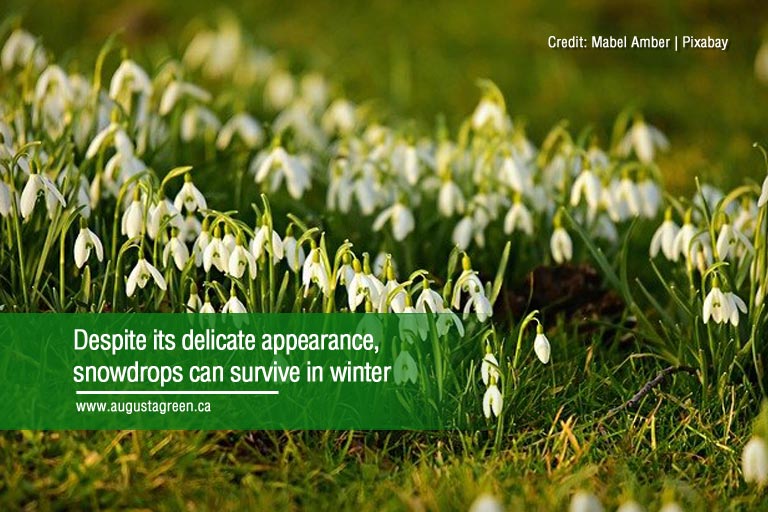
Snowdrop, also known as Galanthus, is a small genus of roughly 20 species of herbaceous plants. They are among the first spring flowers to bloom. While it’s native to Europe, people see them as wild winter flowers in Canada.
Snowdrops are tiny plants standing about 15–30 cm tall. It has two linear leaves that grow about 10 cm long, and it has one small white drooping bell-shaped flower. The flower is fragrant and has six tepals inside two circles and green markings on the smaller inner petals.
The white and green hues of a snowdrop may not stand out when alone, so for the best effect, plant them in groups of at least 25 bulbs. To see an impressive display among the snow, consider planting them along the garden path early in the fall and see them bloom in winter.
However, similar to lily of the valley, this plant can be poisonous to pets and humans when ingested. Be careful when handling them, and keep children and pets away.
4. Winterberry
Ilex verticillata, more commonly known as the winterberry, is a species of holly. This shrub can grow 1–5 m tall. The leaves are about 3.5–9 cm long and 1.5–3.5 cm broad and are green and glossy. Each has a serrated margin and an acute apex.
The flowers are small, only about 5 mm in diameter, and each has five to eight white petals. The fruit is a red drupe that measures 6-8 mm in diameter.
Additionally, it’s one of several hollies that are deciduous, which means it tends to shed leaves during autumn. The fruits persist on the branches throughout the winter season. Since they are commonly associated with festive decorations, seeing these plants in your landscape in winter can add more lively colour and holiday cheer.
5. Winter Jasmine
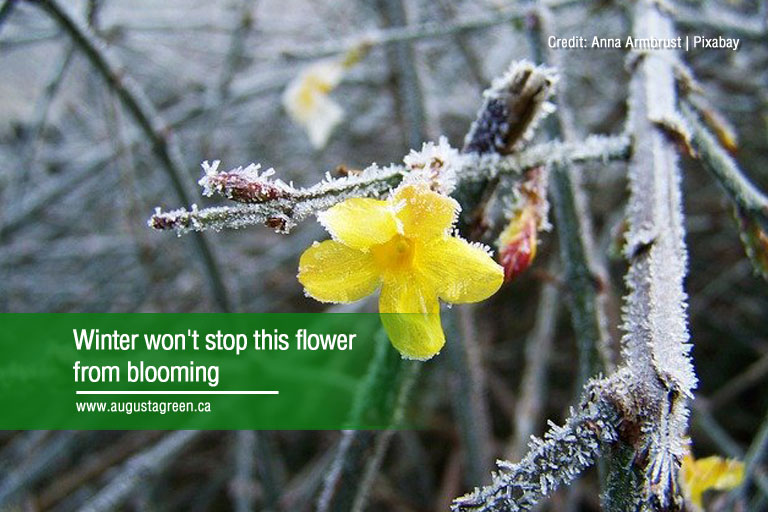
Jasminum nudiflorum, or winter jasmine, is a slender, deciduous shrub that is native to China. Its Chinese name, Yingchun, means “the flower that welcomes spring” because the flower’s blossoming peaks right after winter.
This winter flowering plant grows to 3 m tall and wide, with arching green shoots and dark green pinnate leaves. Each leaf is about 3 cm long and is separated into three oblong leaflets. The flowers have six petals, about 1 cm across, and are white or bright yellow.
Like the rest, winter jasmine is resistant to the cold season. You can also train it to grow against walls or fences for extra warmth or use it as ground cover. While it may not produce any fragrance, its presence can brighten the muted colours you see on your lawn.
How to Winterize Your Plants and Landscape
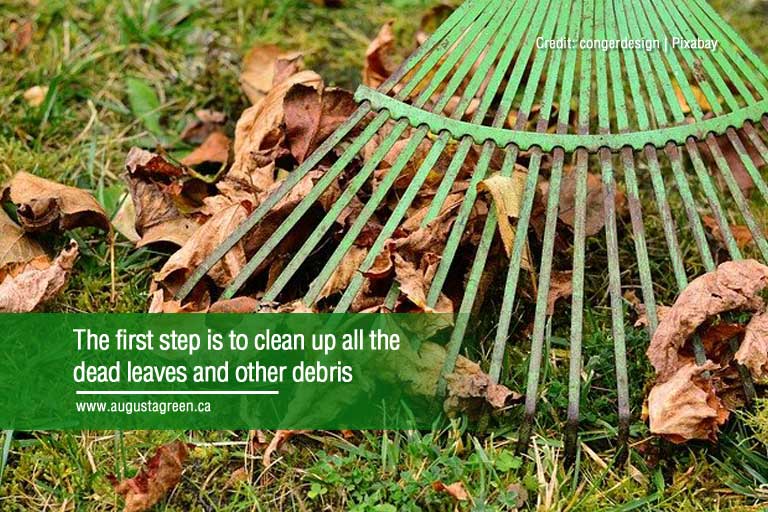
Just as the harsh winter can damage your outdoor lighting system, it can also weaken your landscape. Here are some tips on how to prepare your lawn and other plants for winter:
-
Clean up your yard. Leaves and other debris can smother your lawn and stunt or kill the growth of new grass. Make sure to rake all leaves and remove all debris.
Cut your grass. During the growing season, you should trim your lawn grass to a height no longer than 7 or 8 cm. For the final lawn cutting, on the other hand, cut it to 5–6 cm to prevent your landscape from becoming a feeding ground for pests.
Aerate and fertilize. Although your lawn won’t use the fertilizer in its dormant stage, it will draw upon the nutrients once the weather starts to warm.
Place mulch. Add extra protection to your plants, trees, and shrubs by mulching. It will reduce water loss and help maintain the temperature of the soil around the roots.
Prune plants. The dormant season is an ideal time for pruning. Doing so in late winter leaves fresh wounds exposed in the elements for only a short period before new growth starts.
Minimize water loss. Apply antitranspirants to evergreens, as well as other plants and trees, since this helps to lessen water loss from plant leaves. You can also use burlap wrapping to shield them from salt spray and winter winds.
Reduce salt damage. While salt and melting agents remove snow and ice, they can damage trees and plants by drawing water away from their roots. Remove the extra salt by flushing out the soil with water.
For your plants to grow and your garden to thrive, you’ll need a reliable irrigation system installed by professionals. Our team here at Augusta Green Sprinklers offers excellent sprinkler systems that can help achieve your dream winter landscape. You can contact us at (416) 227-1666 or email us at admin@augustagreen.ca for more information or inquiries.

